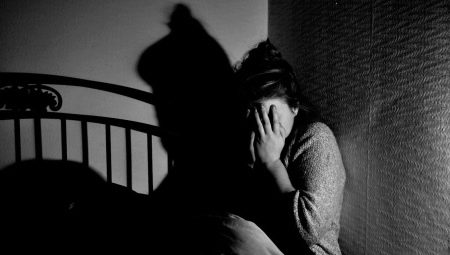Everyone at least once in their life had to experience an inexplicable feeling of anxiety in an unlit room. Some unreasonably exaggerate the danger of darkness, and then fear gradually develops into a phobia. To begin treatment, it is necessary to understand the features of the appearance of fear in the evening and at night.

Phobia Description
The panic fear of the dark is called nikofobia. The word is translated from Greek as “fear of the night” (from the Greek. Nyktos - “night” and phobos - “fear”). Scotophobia (from the Greek. Skotos - “darkness”), achluophobia and ecluophobia are synonymous terms meaning an irresistible fear of the dark.
Most often, the disease manifests itself in children. The world of night is associated with mystery, imaginary images, a nightmare. Subsequently, in most of the kids, the horror of nightfall decreases and disappears completely. But it also happens that over the years no-phobia only intensifies. 10% of the world's population suffers from a pathological fear of darkness.

The peculiarity of this phobia is that all-consuming horror does not cause darkness itself, but the lack of light. The fear arises from the inability to obtain information about the environment. The unknown makes the rich imagination of a person work hard. Creepy, nonexistent phenomena and objects appear in fantasies.
A person suffering from scotophobia experiences incredible fear, even while in his completely safe apartment. More often than others, people with high intelligence, unconventional thinking and strong imagination suffer.
Such persons are endowed with hyperemotionality, increased sensitivity.They are vulnerable, vulnerable and prone to vividly experiencing any emotions.

Often people in total darkness are uncomfortable with the possibility of colliding with any object and nothing more. A phobia differs from ordinary fear in that anxiety gradually builds up and turns into panic horror. With the approach of darkness, the following symptoms are sometimes observed in a person suffering from a phobia:
- tachycardia;
- discomfort in the gastrointestinal tract, stomach cramps;
- frequent urination;
- difficulty breathing;
- Strong headache;
- a sharp increase or decrease in blood pressure;
- dizziness;
- increased sweating;
- chill in the whole body;
- chills, trembling, tremor of hands;
- anxiety;
- fainting state;
- hysterics;
- stuttering, confusion and slowing down of speech;
- dry mouth, loss of voice;
- decrease or increase in muscle tone;
- weakness in limp legs;
- neurotic condition;
- paranoia.

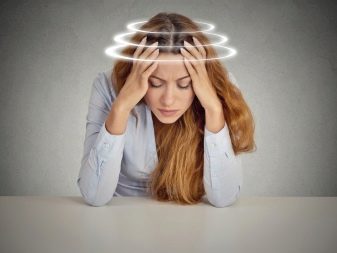
On an emotional level, phobia can manifest itself in a shallow sleep and tormenting nightmares. A man abruptly wakes up in a cold sweat. At that moment, he is unable to immediately understand what happened. Physical activity and an irresistible desire to escape somewhere appear from fright and despair. Subsequently, suspicion and nervousness develop.
The benefits and harms of fear of the dark
A phobia can be beneficial: a person who is afraid of darkness is not prone to risk. Attentiveness and caution is shown not only when you are in a dark room, but everywhere. Extreme sports and drug use do not attract nikofobov. Such people have a well-developed instinct for self-preservation.
However, this is all the pluses. The pathological state of fear often negatively affects the quality of life. Nightmares interfere with everyday life. Lack of sleep, fatigue and lethargy prevent a person from concentrating and lead to distraction. There is a chance to create a neurosis of obsessive states that is not related to the dark.

A man is afraid to move along the street in the evening. An unlit room leads the patient to a stressful state. Regular fears, worries, emotional upheavals are harmful to the body. Perhaps exacerbation of latent diseases. The result of constant nervous strain can be the development of diabetes mellitus, arthrosis, oncology.
There is a high probability of a stroke and heart attack, disruption of the cardiovascular and digestive systems. This may contribute to early death.


Causes of occurrence
Fear of the dark can arise for several reasons.
- The genetic code is inherited. Ancient people were horrified by the onset of pitch darkness because of the possible attack on them by an enemy tribe or predatory animals. And in modern man, the sense of self-preservation sends a signal to the brain about the approach of the most dangerous time of day - night.
- Vision in the dark decreases sharply, a person begins to feel his complete helplessness and defenselessness. Due to the loss of visual acuity, deterioration in smell, at night there is a danger of an accident.
- Almost all children are terrified of the dark. Anxiety in the dark begins due to the absence of a mother nearby. Children's fears can develop into a neurosis. This is facilitated by all kinds of scary stories about creepy nocturnal inhabitants and the teaching of a child to fall asleep alone with the lights off.
- There are parents who themselves inspire the baby with horror before nightfall. By manipulating a child, they program it for fear of the dark. The intimidation of children with fairy-tale and mythical characters causes them great excitement, there is a fear of being left alone in an unlit room. The fear of evil spirits, ghosts begins, sometimes fear intensifies due to the appearance of sounds of unknown origin.
- Excessive Parental Custody contributes to the occurrence of cowardice and self-doubt, which contributes to the emergence of severe anxiety.
- Incomplete family causes a little man a sense of insecurity.
- In adults, necophobia is the rooting of children's fearsTherefore, it is very important to eliminate the disease at an early stage. Most often, fear of pitch darkness progresses over the years. There is a possibility of its transformation into a mental disorder.
- Fear of remaining in the dark alone can cause abnormal fantasies. Imagination is designed to distort some things in the room. Stormy fantasy contributes to the creation of scary paintings.
- Many reflect the excessive impression of an evening viewing of a crime chronicle, a detective story or a horror movie. In low light, and even slight dimming, overly susceptible persons begin to imagine monsters, imaginary images.
- Some associate darkness with non-existence.. Fear of death arises due to its frequent occurrence in the dark. In this case, psychologists are working to eradicate the fear of death.
- The feeling of loneliness causes the need for the presence of a loved one nearby. The proximity of the living soul instills peace and tranquility.
- Stresses, nervousness, conflicts also often provoke a phobia. Troubles at work, lack of stable earnings, illnesses of relatives distort the mechanism of the instinct of self-preservation. There is a feeling of insecurity. A kid, a teenager, and even a person of a respectable age, is able to experience fear of pitch darkness due to the onset of disagreements with loved ones.
- Micronutrient deficiency caused by food restriction during diet, worsens the emotional health of a person and affects the appearance of nightmares.
- Psychological trauma can remain for many years after an unpleasant incident that occurred in an unlit room or in the evening on the street. According to statistics, only 20% of those who were robbed in the dark during the day get rid of phobia over time.
Women who have experienced sexual abuse cannot overcome their fear of darkness throughout their subsequent lives.

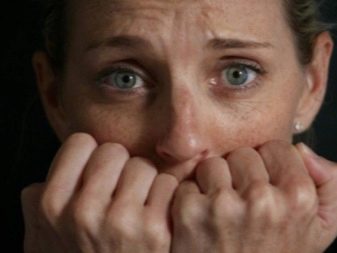
How is fear manifested?
A feature of the phobia is the avoidance of dark places. The apartment of people suffering from a phobia is illuminated from all sides: everywhere the light is on. An unlit room signals a danger. In the dark, ordinary objects are perceived a little differently. Scary pictures are drawn. Any rustle scares and causes a strong panic.
Sometimes, fictional images begin to float before your eyes, as if in reality. The processes in the subconscious are so disturbed that pseudo-hallucinations occur. The inability to distinguish imaginary creepy pictures from reality can cause serious mental disorder. Some have destructive behavior: flight or a wild cry.
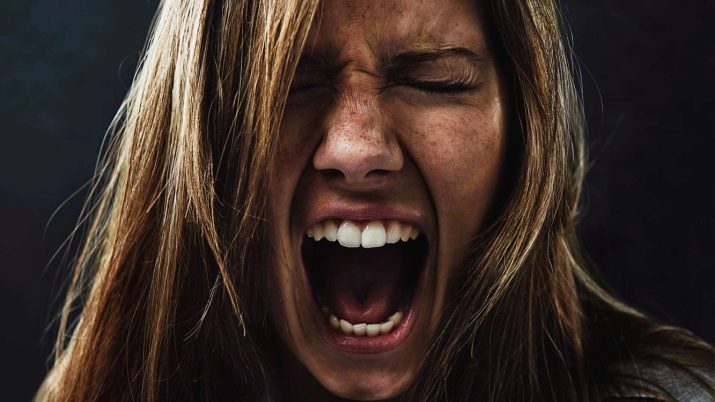
Sometimes adults, just in case, before bedtime leave a flashlight next to them. There are people who prefer to fall asleep to the sound of the TV. Someone is afraid to see the shadow of deceased relatives, someone is oppressed by a sense of suspense. All sorts of squeaks, rustling do not allow to sleep peacefully. Some strenuously listen to the rattle and peer into the darkness. Others, on the contrary, try to tightly close their eyes and cover their ears with a blanket.
For cattle, the biggest tragedy is the sudden blackout or failure of electrical appliances. In this case, they are pre-stocked with candles, flashlights and a mobile phone with a bright screen. In the absence of an additional light source, such people flee. If it is impossible to find the illuminated area, they begin to panic, scream, call for help.
In childhood, necophobia is much easier than in adulthood. An increase in childhood phobia should not be allowed and it should be transformed into a serious disease. From an early age, it is necessary to tune the child in a positive way, to contribute in every way to maintaining the baby’s good mood.

The objects of children's fears are often fabulous and mythical characters. Kids are very difficult to fall asleep due to intimidation by their monsters and horror stories. It is necessary to explain to the little man that in real life these monsters do not exist. They are the fruit of someone's wild fantasy. Impressive children should not watch TV at night.
Feeling incredible horror, the child cries, wakes up his parents at night. In no case should one blame him and call him a coward. It is necessary to hug the baby, calm, support. If the little man is too afraid, you can turn on the night lamp or leave the door to his room open.
You can’t ignore children's nightmares.
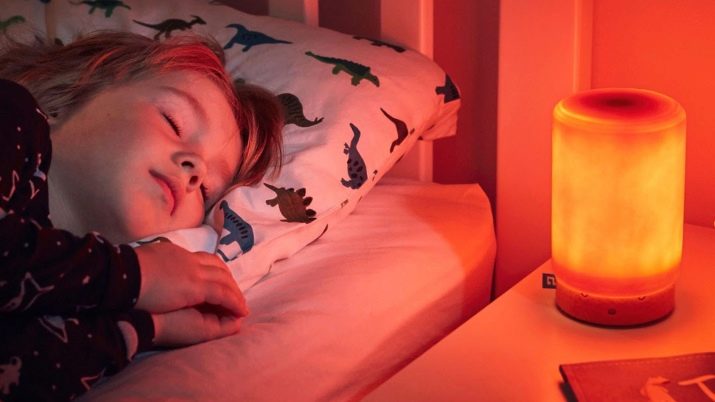
Treatment methods
Modern psychology offers many interesting methods of displacing a phobia with positive emotions.
To fight the disease, you need to start with the onset of the first symptoms. Children's fears are much easier to overcome. The older the person, the more difficult it is to get rid of the disease. It is important for the baby to feel tenderness, love, and parental care. Hugging and kissing a mother or father can be the best cure for all fears.
Most of all, the child is afraid in the darkness of the unknown. You can stick luminous stars and a crescent moon all over the room. It is very important to ask your child to close his eyes before going to bed. After that, you need to get rid of the lighting with the words: "I turn off the light."

A good therapeutic agent is a soft toy or pet. Let the baby sleep with his pet. In order to avoid the development of infantilism or excessive superstitiousness in the future, some psychologists recommend removing the “defender” as soon as there is no urgent need for it.
It is necessary to find out from the baby whom or what specifically he is afraid of in the dark. After that, you should draw a frightening object illuminated by the bright sun and a light bulb. From the leaflet with the picture you need to make a boat, which the child himself will sail in the river.
Sometimes a child does not need outside help. By 8-10 years, the phobia itself passes. As a preventive measure, the baby can be invited to the touch to look for something in a dark room. At the same time, we must have a cheerful conversation with him, joke, laugh. If there is fear, a child can be offered a flashlight. He must feel completely safe in the absence of light.
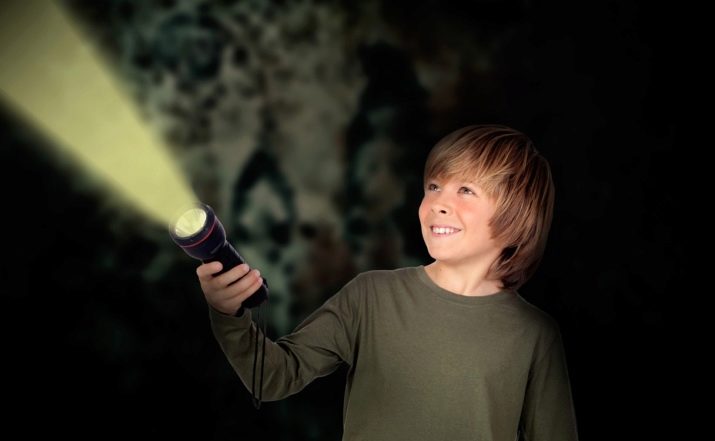
You can move with your child from a lighted room to a dark room. The action must be repeated several times. You can arrange a game with turning on and off the light, while you need to focus the child’s attention not on lighting and darkness, but on songs, clapping, bouncing, funny words.
Children's psyche is plastic. It is easy to treat. Medicines will not be needed. Phobia is easily eliminated using creative techniques. Fairytale therapy, exercises with sand, special games make the child relive his fears, make sure that there is no threat. Tales of the baby about his own horrors associated with the dark time of the day can also help him cope with his phobia.
In adults, acquired fear is easiest to treat.
In this case, you need to give a person the opportunity to throw out their emotions and clear themselves of emotions. Art therapy, symbol drama and some other techniques are aimed at correcting the situation. Timely access to a therapist ensures the complete elimination of this phobia.

If the fear of the dark does not cause severe inconvenience, then there is the likelihood of an independent disposal of it. You can overcome a phobia as follows.
- Gradually reduce the brightness of the lighting, thereby weaning yourself from the light. First you need to adapt yourself to twilight. Then, with the growth of darkness, it is necessary to find the very moment of fear.It is necessary to look at this fear from the outside, to analyze objects or phenomena that cause horror. It is necessary to understand where the image came from in the head, to survive it. Fear is gradually dissipating.
- It is necessary to understand what exactly looks threatening at night in the imagination and challenge it.
- During the day, you should periodically relax to achieve complete relaxation at night. You need to learn how to exercise control over your body. Gymnastics based on the duration of exhalation promotes relaxation. First you need to freeze, completely hold your breath. In ancient times, this was done so that predators would not notice. A calm and long exhalation is performed when counting in the mind up to 8-10.
- Usually the fear of the dark appears when a person is in an unlit room alone. You can invite a loved one for a while, and stay with him until complete darkness, and then remain there in solitude.
- It is important to look at the darkness from a completely different perspective: night time enables a person to enjoy deep sleep and rest.
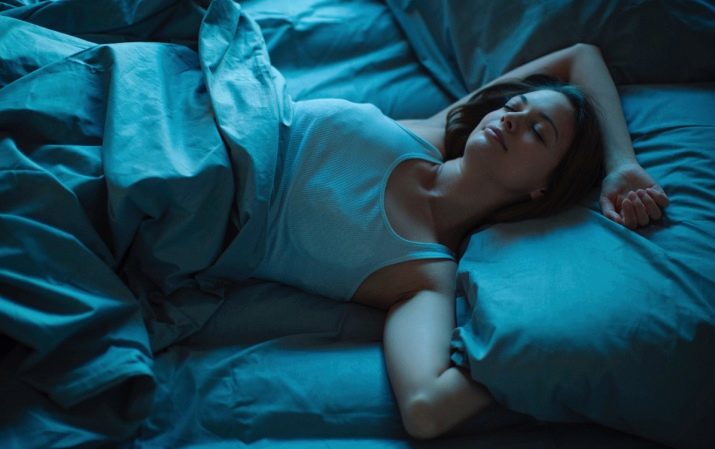
When the situation gets out of control, you should seek help from a qualified professional. Sleep with the light on does not solve the problem. He only delays her decision. It should be remembered: the darker the room, the deeper the dream.
The fear of darkness that arose due to the personality characteristics of the individual is difficult to correct. An adult should not be ashamed of fear of the dark, because a healthy sleep improves vital activity.
A qualified therapist will help identify the cause of the phobia, advise and prescribe a comprehensive treatment.
Drug treatment is possible in the period of exacerbation, to relieve some symptoms. Medicines will not help completely overcome the phobia. Sedatives and antidepressants protect against the onset of severe depression, but do not solve the problem. In addition, the drugs are addictive.

The therapist can offer hypnotic sessions. A phobic sufferer is immersed in a trance for a while. The inclusion of the subconscious makes it possible to replace creepy thoughts with recognition of the unjustified fear of the dark. This method will be relevant only for those individuals who tolerate hypnosis well.
The hypnologist corrects the psyche, “puts” it in the right direction. At the end of the hypnosis course, fears dissipate, the phobia is replaced by positive thoughts:
- there is no sharp reaction to the approaching night;
- man understands that there is nothing terrible in the dark;
- mental state is gradually restored;
- the fear of mysterious shadows and unknown phenomena in an unlit room disappears.
The result of therapy is very long. However, for each client you need to "pick up your key", and the task of the therapist becomes helping the patient. Otherwise, neurasthenia only increases, there is a likelihood of formation of associated phobias, not associated with the fear of the dark. If this happens, the therapist prescribes different drugs.

There are special trainings that teach you to relax, bring your breathing back to normal and control your emotions. Initially, a person suffering from a phobia should answer a number of questions:
- When did I become afraid of my fantasies?
- What can happen if I fall asleep with the lights off?
- why am I anxious and how to eliminate it?
- Why am I afraid of this particular imaginary creature?
- What will happen to me if I fall asleep?
- Can I overcome fear on my own?
Before going to bed, you need to visualize your dream, remember the pleasant moments of life. All your thoughts must be directed in a positive direction. It would be nice to transcode negative associations into positive ones in a comfortable position, with closed eyes and calm music. It is advisable at these moments to represent the expanse of the azure sea, crumbly golden sand, blue sky, green bushes and trees, beautiful flowers.
Before going to bed, you can walk through the dark bedroom, feel for all the objects in order to convince yourself of their complete safety.

